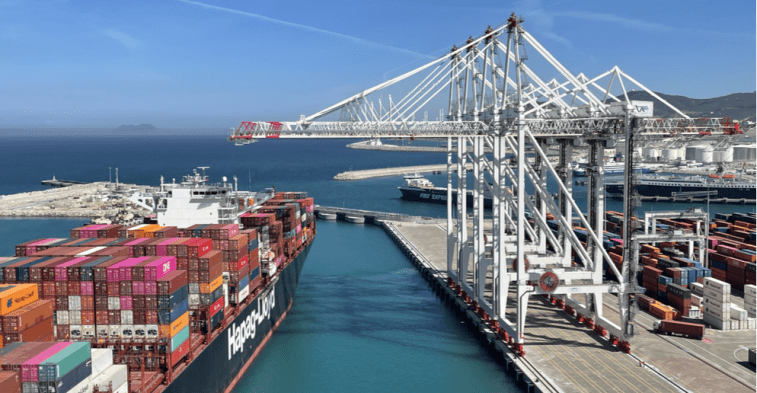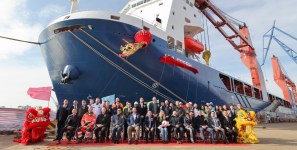A ROUNDUP OF RECENT MERGERS AND ACQUISITIONS THAT ARE SHAPING AND DEFINING THE CARRIER INDUSTRY
There is no denying that the past 18 months have been a tumultuous period for the global maritime industry.
According to the United Nations Conference on Trade and Development (UNCTAD), sea-based trade plunged by 4.1% in 2020 due to the unprecedented disruption caused by COVID-19.
The pandemic has sent shockwaves through supply chains, shipping networks and ports, leading to plummeting cargo volumes and foiling growth prospects, not helped by the enormous uncertainty that accompanies the world’s efforts to emerge out of the pandemic.
Despite the gloom, UNCTAD expects maritime trade growth to return to positive territory and expand by 4.8% in 2021, assuming world economic output recovers. However, the organization highlights the need for the maritime transport industry to brace for change and be well prepared for a transformed post-COVID-19 world.
Looking at the commercial and strategic activities of major shipping lines is often a good sign of the health of the industry more widely.
As we progress through 2021, mergers and acquisitions are giving mixed signals, and clearly paint a picture of fluctuating fortunes.
Damco and Diamond S Shipping dissolve
In September 2020, industry leaders Maersk announced that it would be integrating Damco’s air and ocean less-than-container-load shipping into its wider business, thus dissolving the brand it merged with Maersk Line at the beginning of 2019.
The move was part of series of strategic plays by CEO Soren Skou that are geared toward a central goal of becoming an integrated logistics company that provides end-to-end solutions for its customers.
Shipping commentators regard the Damco internalization as a blurring of the lines between forwarders and carriers.
For forwarders, alarm bells could start ringing as Maersk now provides direct competition to these companies. DB Schenker reacted quickly to the announcement, offering a so-called stability package to Damco customers that matched the previous terms they were operating under.
It has created a fascinating dynamic, as many forwarders rely on Maersk as a supplier of carrier services.
And Damco has not been the only casualty of the Danish company’s reshuffling. Maersk has also spun off lines that include its once-formidable oil drilling business, instead focusing its efforts on acquiring businesses that fit into its core purpose. This includes those specializing in customs and warehousing, as well as numerous digital tools.
Another well-known brand that has fallen away is America’s Diamond S Shipping, which in March announced it was merging with New York-based International Seaways, the latter keeping its brand as part of the all-stock transaction deal.
Post-merger, International Seaways will own a fleet of 100 tankers that between them have a capacity of 11.3 million deadweight tons, assets which give it an implied market capitalization of around $1 billion. The fleet split will be approximately 70-30 between crude tankers and product tankers respectively.
Diamond S Shipping went public after it merged with Capital Product Partners in early 2019, this after failing with an IPO attempt five years earlier.
Speaking at the time of the latest merger announcement, Nadim Qureshi, chairman of the Board of Directors of Diamond S Shipping, commented: “We are pleased to enter into a transaction that will both create near-term value for our shareholders and create a superior, scale vehicle that enables investors to gain exposure in both the crude and product tanker markets with strong fundamentals. Importantly, since the focus of the management teams of both Diamond S and INSW are similar, we see further value from synergies in the combined company.”
The combined company will be home to 2,200 employees and carry a market value of around $2 billion.
K-Alliance and Hapag-Lloyd show brighter prospects
In South Korea, a huge code-sharing agreement in the form of the K-Alliance looks set to strengthen a series of shipping firms’ competitiveness in Southeast Asia.
The move sees several enterprises joining forces–HMM, SM Line, Pan Ocean and the recently merged Sinokor Merchant Marine and Heung-A Line–with the intention of reducing operating costs and increasing quality of services.
It is thought that the alliance represents around 40% of South Korea’s container volumes in the region, which stands at approximately 480,000 TEUs. It is hoped that this consortium will help to stave off international competition that is threatening to take a greater market share.
K-Alliance is the brainchild of South Korea’s Ministry of Oceans and Fisheries, which oversaw the signing of the agreement via video conferencing toward the end of 2020. As an extra incentive, it is offering alliance members preferential interest rates for new vessel orders.
On announcing the move, the ministry hinted that more activity could be in store.
“It’s the first attempt to form a service alliance consisting of only South Korean carriers to reap economies of scale,” read the announcement. “Other operators are welcome to join in at any time, in consultation with existing member companies.”
Korea’s shipping industry, having hit rock bottom, is starting to show signs of a rebound, the K-Alliance being another indication that the sector is on its way to a substantive recovery.
The activity of German firm Hapag-Lloyd also sheds some light on the general direction of travel for the global shipping industry. In announcing the acquisition of NileDutch in March 2021, it has signaled its intent to expand its operations in the booming African market.
With over 40 years of expertise, NileDutch is one the most prominent providers of container services from and to West Africa. The company is present in 85 locations across the world and has 16 offices spread across the Netherlands, Belgium, France, Singapore, China, Angola, Congo and Cameroon.
With 10 liner services, around 35,000 TEUs of transport capacity and a container fleet of around 80,000 TEU, the company connects Europe, Asia and Latin America with West and South Africa.
Rolf Habben Jansen, CEO of Hapag-Lloyd, outlined the firm’s faith in the African market when news broke of the NileDutch transaction.
“Africa is an important strategic growth market for Hapag-Lloyd,” Jansen said. “The acquisition of NileDutch strengthens our position in West Africa and will be an excellent addition to our existing activities on the continent. Our combined customer base will benefit from a denser network from and to Africa as well as from a much higher frequency of sailings.”
Indeed, as the world begins to emerge from its cocoon and vaccination programs extend their reach, it will be with great interest to observe where the dust settles in relation to the makeup of the global ocean carrier industry.
Some big names have disappeared while others have strengthened–a new status quo that has revealed key trends which could shape the sector moving forward.
Whether it is the move by giants such as Maersk to combine forwarding and carrier services, or the clear vote of confidence shown by Hapag-Lloyd in the African market, the dice are starting to be rolled after the standstill period brought about by COVID-19.





Leave a Reply